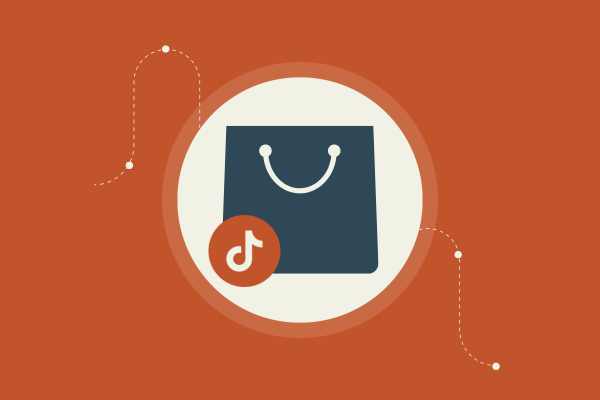What to Do When You're Missing COGS Data
Imagine running a store without knowing how much your products cost. That's a nightmare, right? Missing COGS data can feel like steering a ship blindfolded. The first step is to figure out what's missing and why it happened. You need to know what you're working with before you can fix it.
Once you see the gap, you can start estimating. List your purchases and guess the rest. Use smart strategies to fill in the blanks, and don't panic if it feels tricky. Remember, you can always find creative ways to get closer to the real numbers.
Accuracy matters. If you get your COGS wrong, your prices can go off. So, track everything as best as you can. This isn’t just for today; it's for tomorrow and beyond. Consistent updates help keep your ship on course.
Key Takeaways
Fix missing COGS data by assessing the gaps and using creative estimates.
Track inventory consistently to maintain accurate COGS.
Adjust pricing strategies based on true COGS data.
Understanding COGS and Its Importance
Knowing your Cost of Goods Sold (COGS) is crucial for running a killer business. Why? Because it hits directly on your profitability. Get it wrong, and your profits go poof!
COGS basically tells you what it costs to produce or purchase the products you sell. This includes direct costs like materials and labor. It's not some fancy accounting trick. It’s real money going out.
Calculating COGS is important because it helps you figure out your gross profit. This is the cash left after you subtract COGS from your revenue. Simply put:
Gross Profit = Revenue - COGS
Without knowing COGS, making smart pricing decisions is like throwing darts in the dark. You want that fat profit margin, right? Then get tight with your COGS.
COGS isn’t just numbers on an income statement. It shows how efficient you are in managing what's going in and out. Lower your COGS, and you're looking at a beefier bottom line.
Now, let’s be real. Tracking it can reveal where your dollars are leaking. Spot inefficiencies? Great! You can attack them. COGS can clue you in if you’re overpaying for stuff or need to streamline processes.
The magic of COGS: when you manage it like a pro, your profitability could soar. So get cozy with those numbers, and watch your profits roll in!
Diagnostics: Assessing the Gaps in COGS Data
First things first. You gotta know what you're dealing with. Start by listing what data is actually missing. Is it the raw materials, inventory, or maybe some overhead costs? Each one plays a part in calculating COGS.
Grab a pen or a keyboard. Create a checklist. Write down every data point you need for COGS. This gives you a roadmap.
Next, compare your list to what's available. Where are the holes? Are you missing some data on raw materials pricing? Or maybe it's inventory counts that are off. This is where you'll find what's missing.
Talk to your team. Sometimes they're sitting on data you didn't even know existed. They might have access to some overlooked financial reports or a dusty warehouse log.
Use software tools. Data inventory software can scan your existing files. Look for gaps or discrepancies. Sometimes everything you need is already in your system, just buried.
Consider automation for missing data collection. Use digital tools to streamline inventory management. This can minimize any future data gaps.
Create a plan. List actionable steps. Who's checking what? When will it be done? Get everyone on the same page.
Finally, ask yourself: do you need external help? Sometimes bringing in a financial consultant can save you time and hassle.
Strategies for Estimating Missing COGS
When you don't have the cost of goods sold data, there's no need to panic. Dive into tried-and-true methods to estimate your COGS. Each approach has its own strengths to help you get closer to an accurate number for your online store.
Average Cost Method
This method is straightforward. You take all the costs of your items and divide them by the number of items you have. It's like calculating the average cost of a pizza slice when you bought the whole pie. By doing this, you smooth out any fluctuations in prices and get a balanced view.
With the average cost method, keep track of both the total expenses and the number of units sold. This approach helps in financial planning and ensures your gross margin stays stable. It's great if you often see variations in purchase prices. Consistency is key here. When purchase prices are all over the place, this method makes them seem less wild.
First In, First Out (FIFO) Method
FIFO is as simple as it sounds: first in, first out. You sell the oldest stock first. Imagine your store's inventory line. The stuff you bought first gets sold first. This method works wonders when prices keep jumping up. By selling older, cheaper stock, you keep COGS lower, boosting your profits.
Inventory tracking is crucial with FIFO. Keep an eye on your gross margin to ensure steady growth. It aligns well with reality because you're moving the old stock before it loses value. This method often mirrors the natural flow of goods in most businesses.
Last In, First Out (LIFO) Method
The opposite of FIFO, this method works with the last-in items sold first. Picture this as selling off the new arrivals first. LIFO is handy when prices are volatile and rising. It gives a better COGS estimate during inflationary times since you're matching current revenue with recent costs.
This method can be great for financial planning if you're worried about rising prices. It gets you a higher COGS and puts inflation's pain front and center. However, LIFO might not be the best at mirroring real-life operations, but it can offer tax benefits in some regions.
Specific Identification Method
This method is all about details. You mark each item with its purchase price and sell it at that tracked cost. Think of this like having a tag attached to every product with its history and cost. You know exactly what you're selling and at what cost.
Specific identification shines in businesses with unique or expensive items—products that can't be just averaged out. It's precise, allowing for meticulous inventory tracking and accurate gross margin calculation. The downside? It's time-consuming and more complex. But if you deal in high-ticket items, the accuracy might be worth the effort.
Implementing Reliable Inventory Management
You gotta get your inventory game tight! Managing inventory is key to keeping your online store running smoothly. Start with smart tech. Use systems like QuickBooks or Xero for your ecommerce accounting and bookkeeping. These tools help track your costs in real-time.
Wanna cut costs? Lower those fulfillment and shipping costs. A solid inventory system keeps your inventory costs in check and ensures you’re not overstocking. Sell fast so you’re not sitting on a pile of unsold goods.
Set up clear processes. First In, First Out (FIFO) is your friend here. Sell older items first to avoid waste. Better use of FIFO processes will help you move dead stock faster.
Using platforms like Shopify? Integrate with tools like A2X for accurate Shopify accounting. Know your inventory levels down to a T. This means less time fumbling, more time selling. It makes a world of difference.
Training your team is crucial too. Less human error means fewer headaches. Regular training sessions keep everyone on track and accountable. And hey, accountability is big when it comes to managing your store.
Invest in good software and team practices, and watch your store grow. Got this!
Calculating Overhead and Indirect Costs Accurately
Listen up, because getting your overhead and indirect costs right is a game-changer. This is how you figure out what’s really eating into your profits.
Overhead costs include everything that's not directly tied to making your products. Think of rent, utilities, and office supplies. These are the little things that nibble away at your net profit quietly.
Want the magic formula? Tally up all these indirect costs. Then, divide by what's called the allocation base. It could be the total income or labor costs. Multiply by 100 to find your overhead rate.
Your gross profit margin should scream efficiency. Lower overhead means more cash in your pocket. So, keep a close eye on this number. No one likes surprises, especially your wallet.
Operating expenses are key. You've got your marketing costs, packaging costs, and labor costs. These sit under the umbrella of overhead. They're the sneaky ones that hit you hard if you're not careful.
Be proactive. Regularly review your purchases area and make necessary cost adjustments. Stay nimble. It’s like a game of whack-a-mole—quick reflexes win the day.
Keep your finger on the pulse of your spending habits. It's all about tweaking until you hit the sweet spot. Don’t let these overhead costs chase away your profits.
You’ve got the tools. Now make sure you’re using them. Keep your business tight, and watch your profits climb.
Optimizing Pricing to Reflect True COGS
You want to make money, right? Then you need your pricing to match the cost of what you're selling. This is where knowing your Cost of Goods Sold (COGS) gets important.
First, understand your margins. This is the difference between what it costs to make or buy your product and what you sell it for. Missing COGS data can mess this up.
Now, let's talk about strategic pricing. Adjust your prices to reflect true COGS and cover any missing gaps. Keep that profit margin healthy. Your pricing should consider production, delivery, and any hidden costs.
Want a quick tip? Check out what others are charging and see how your costs line up.
It's like a game. You gotta stay on top of changes and move fast. If material costs go up, you need to adjust your prices. Stay in control of your profit margin.
Try making a simple table to keep track:
Cost Component Amount ($) Production 50 Shipping 10 Total COGS 60
Want to add more value? Bundle products or offer deals. Pricing isn't just numbers; it's strategy. Use discounts tactically to increase sales without hurting margins.
Never forget: pricing is power. When you get it right, everything else just falls into place.
Navigating COGS for E-Commerce Platforms
When you run an online store, handling your Cost of Goods Sold (COGS) is crucial. It’s the number that tells you if you’re making or losing money. Get it wrong, and you're in trouble.
First, let’s talk about Shopify. This platform provides tools to help you track your COGS. Make sure you’re using these. Accurate data is gold.
COGS involves a lot. Think direct labor and how much time goes into each product. You gotta know these numbers. Automate where you can to save time and money.
A great way to stay on top is using a simple list:
Track inventory levels
Monitor all costs
Update records regularly
Got a big sale? Update your COGS pronto. You can’t fly blind.
Then there’s the art of calculating COGS. It’s not just about knowing what you spend. Check out this guide on the COGS formula.
Don’t forget: packaging and shipping count, too. In e-commerce, you sell a lifestyle, not just a product. Every part of that sale matters.
With tools and tricks at your disposal, mastering COGS doesn’t have to be hard. Stay sharp and keep an eye on everything. Your profits will thank you.
Leveraging Accounting Software for COGS Management
You want to nail down those costs, right? Using accounting software is like having a GPS for your business numbers. It keeps you on track. You get the clarity you need to see where your money's going.
QuickBooks Online is a solid choice. It helps with inventory tracking. You know exactly what's on your shelves and at what cost. Plus, it connects with thousands of other apps. Fancy!
Need help with payroll? No problem. This stuff isn't just about what you're selling, but who's making sure it gets sold. Make sure your team sees their hard-earned cash without hiccups.
Worried about your cash flow? Accounting software is there for you. Track every dollar in and out. Feel like a financial wizard as you predict what's next for your business funds.
What about accrual accounting? It’s a big word, but don’t sweat it. The right tools make it as easy as pie. You record revenue and expenses when they happen, not when the cash changes hands. That way, you've got a clearer picture of your financial performance.
Bottom line? You need software that turns chaos into clarity. Because when you’re guessing, you’re losing. Now, go out there and manage those costs like a pro!
Taking Your Business to the Next Level
Want to level up? Listen close. Let’s make some big moves with your online store.
First up, know your financial performance. You gotta understand what’s going in and out.
Start by mastering those COGS reports.
Accurate COGS Calculation is your best friend. When you know your numbers, you make solid business decisions.
These numbers help with gross profit margins and set you up for success.
Thinking like an investor helps, too. Look beyond the present.
Strategic decisions today make the future brighter. Train your mind to see long-term growth.
Don’t ignore labor expenses. Efficient staffing can mean better profits and less waste.
Empower your team by training them well. They’ll rock their roles and help you grow, just as successful businesses do.
Let’s talk accounting practices. Keeping clean records matters.
When tax season rolls around, you want those juicy tax deductions lined up. Nobody likes surprises from the IRS!
You’re running a small business, and that’s your ace. It’s all about flexibility and moving fast.
Adapt and adjust as needed. You’re the captain here.







